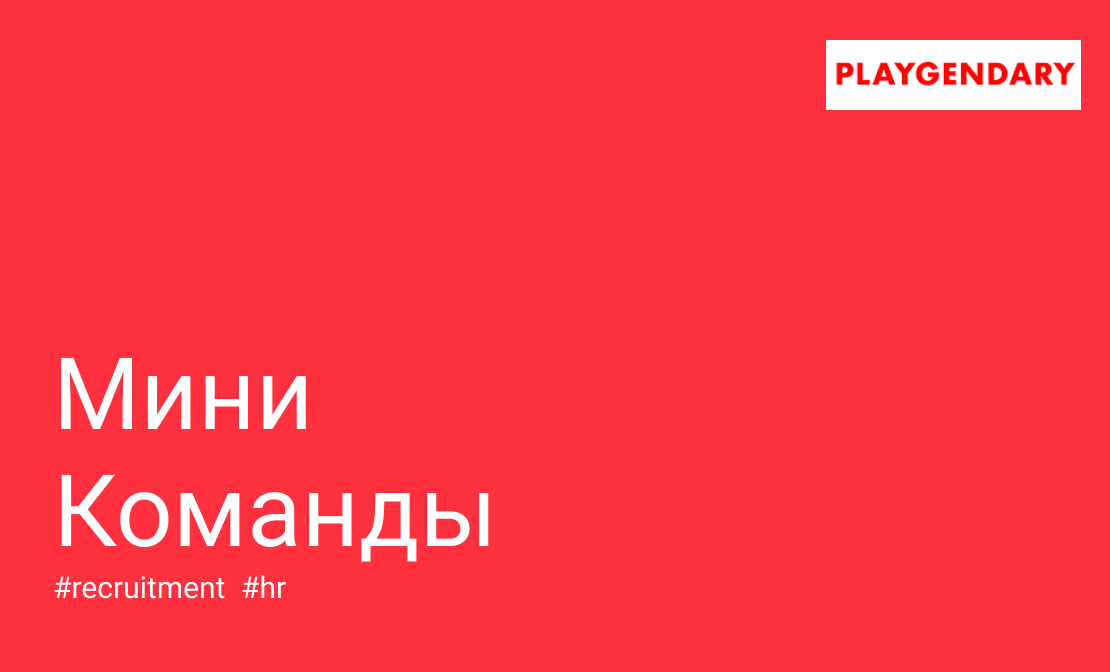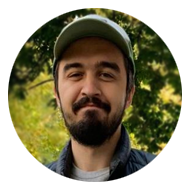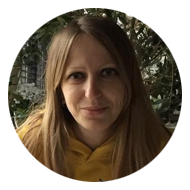"The number of accepted offers has increased by 35%," — Playgendary about the results of the new HR project
In 2020, the gaming company Playgendary implemented an original HR initiative. The company has divided the HR department into small HR departments. Everyone is self—sufficient and works exclusively with their own business unit. Playgendary shared her new experience in an interview with App2Top.ru .
Note: This project, which was called “Mini-teams in the recruiting and HR department“, won in the “Relevance” nomination at the event of game HR specialists “Game Dev HR Awards“, organized by the recruiting platform Talents In Games.
Before we talk about your HR project, let’s focus on the challenges that the recruiting team had before you launched it.
Artur Davydenko — Head of People Operations — Playgendary
Arthur: Today we continue to grow. And growth is the main thing that interests us, our main challenge. An increase in the number of employees, an increase in the quality of hiring, an increase in the level of competence of employees. We invest a lot in this.
But was there any priority in terms of growth? It’s difficult to increase everything at once.
Arthur: Sure. The key was to work on the quality of each vacancy.
It is important to understand here: for us, hiring an artist in the Hypercasual department and hiring a video designer in the Marketing department are very different from each other.
Why? And there and there you just have to find a person?
Arthur: It’s only in the first approximation that everything seems so simple.
If we talk only about these areas, then new information and new data are constantly appearing on them. And when hiring, in order to work out a vacancy qualitatively, it is necessary to constantly be in context, as well as to understand the problems of the team well, in its business tasks.
And how was the task set by the management?
Arthur: It’s important to note here that we have a non-linear management style, we don’t work in such a way that I or someone else tells the team leaders what to do. We, together with three HRBPs of the company, collect key problems, and then formulate tasks to solve them.
The key task we have chosen is to improve the quality of hiring and increase its volume in each team (and we have three of them).
What kind of team are you talking about?
Arthur: My colleagues who are involved in these teams will tell you about this better.
Olga Kotenko — HR Business Partner in Casual — Playgendary
Olga: Before I talk about teams, it is important to understand: initially we had a more traditional model — there were several directions within the company. One of these areas was HR, which, among other things, was constantly looking for the necessary personnel.
The peculiarity of our project is that we decided to abandon such a model. Within the framework of the initiative, three business units were formed: Hypercasual, Casual, Marketing.
A team of recruiters, resellers and HR-s was formed for each unit, which closely interacts with the management team of its direction.
Do I understand correctly that now each department has its own HR, or is everything more complicated?
Olga: Everything is more complex. Every team now has:
- Lead Recruiter — is responsible for the results and effectiveness of hiring, and also participates in the recruiting forecast, prepares materials for interviews, conducts them, plus, of course, develops team recruiters through mentoring;
- Hiring Manager — responsible for updating the needs, for how candidates are interviewed, as well as for the quality of technical interviews (and those who conduct them);
- HR is responsible for onboarding newcomers, adaptation and development of employees, helps to prepare high—quality onboarding, together with a manager and mentor, analyzes employee engagement, monitors the emotional state and atmosphere in the team, gives his recommendations to managers, monitors the quality of employee competence development;
- Researcher — responsible for the database of potential candidates, does sourcing and mapping of companies;
- HRBP (HR Business Partner) — responsible for recruiting processes and analytics, for HR processes and its analytics, and is also the people manager for Lead Recruiter and HR;
- also, sometimes an external producer of the direction is involved, who gives feedback on the work of the entire mini-team, but first of all connects in controversial situations with candidates and helps to resolve them.
Yulia Pukhova — HR Business Partner at Hypercasual — Playgendary
Yulia: I would like to note that our HR specialists are also actively involved in supporting employees in difficult life situations: in particular, during the pandemic and the transition of employees who prefer to work in the office to remote work.
So, you have chosen such an unusual model. How is it better than the classic one?
Evgenia Semenova — HR Business Partner in Marketing — Playgendary
Evgenia: In my opinion, this is exactly the model that is needed in a rapidly changing and competitive market, where each unique specialist is worth its weight in gold.
Surely, you have found yourself in the place of a frustrated bank/taxi/insurance customer, etc., who had to interact with the general technical department.support? How did you feel when the issue could not be resolved for a long time, the specialists changed, and you did not feel their interest? At exactly such a moment, you would like to have a personal manager who would know everything about you and be in touch 24/7.
The analogy, of course, is not direct, but the principle is similar: the classical model implies on-demand streaming, whereas the team model implies personal responsibility for the results of employees and interest in any of their ideas and proposals.
Yulia: Such a model allows HR and Recruitment not to be “dispersed”, it contributes to a deeper understanding of the goals, objectives, needs of the business and specific teams. Thanks to this, efficiency with quality, recruitment, and HR processes are growing.
I can also note that the perception of HR/Recruiting teams as a whole has changed: now they are not some separate units of companies, but integral parts of certain teams.
Olga: Having immersed and concentrated more deeply on the pains and issues of each direction, step by step we began to improve HR processes, form effective recruiting principles and teach them to our Hiring Managers.
What about the numbers? Can you share how much more effective the new approach was in numbers?
Arthur: If we talk exclusively about recruiting, then after the introduction of the new structure, we now have 35% more accepted offers per month. And, what is also important, positive feedback from all Hiring Managers.
In general, it is too early to talk about the results in HR, since most new employees are only undergoing onboarding, but the percentage of completion of probation periods is currently higher than usual.
Were there any pitfalls in the transition to the approach, something that you could not initially predict?
Yulia: I don’t think there were any specific “pitfalls” for us, because before the implementation we tried to foresee all possible difficulties.
For our part, having already passed the transition period, we can recommend our colleagues and followers to take a more serious approach to preparing such a restructuring, prescribe a vision, plan and expectations. This will help in a smoother and softer implementation.
Olga: I can’t say that it was easy, restructuring always has its difficulties. There were new roles in the team, for example, HRBP, and it was necessary to get acquainted with this role yourself, to introduce others. Recruiters and resellers needed to become more versatile, begin to master new specializations in recruiting.
We had to do everything quickly and efficiently: strengthen our teams with recruiters and resellers, train new team members and hiring managers on the principles of effective recruiting. We understood that it would not be easy, but we coped with it and continue to become even stronger.
Who would you advise to follow in your footsteps? Is it possible to say that it is better to choose such an approach for those companies that have a wide portfolio of projects of different nature. Is it better for everyone else to use the classic approach? Or is it something else?
Olga: It’s not the first time you’ve talked about the classical approach. Here it is important to understand what is meant by classical.
Look, in some companies there are not even divisions between the roles of “recruiter”, “receiver” and HR. We had it initially. And this approach proved to be much more effective than the approach without separation into roles.
Now we have focused on certain areas.
Answering your question: it seems to me that even if companies do not have a wide portfolio of projects, it makes sense to make mini-teams in areas (for example, marketing, art, development, cross-project). Within the framework of such a system, it is much easier to solve the pains and problems of each direction.
Evgenia: In my experience, in companies with a small staff and an HR department of 2-3 people, this approach may not make practical sense, while the project portfolio can be as wide as possible. But I love our industry for the fact that there are definitely no rules here! It is necessary to try, measure efficiency, change, analyze again and always keep abreast of both market trends and moods within the team.
What long-term effects do you expect after the project is implemented?
Arthur: The first thing we see is excellent feedback from the “hiring” teams, because we work deeply on each vacancy and understand the business. This means that we can more accurately and quickly find cool colleagues.
The second result: the opportunity for each recruiter and HR to develop in different areas, expanding their knowledge and skills.
Evgenia: The HR function is a business function. It is not only about operational issues and closing holes, as in many companies, alas, it is still common, but also about strategic vision. Our personal interest is for the HR team to really influence the development of the company, to be able to answer both the question “how to make our employees happy” and the question “how much money will it bring us”.
Is there any news? Share it with us, write to press@app2top.ru




